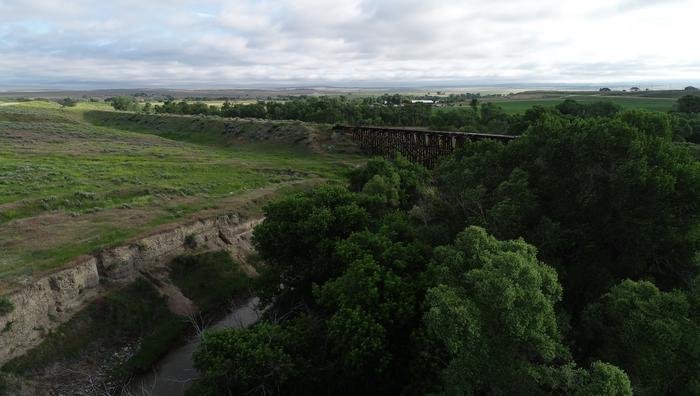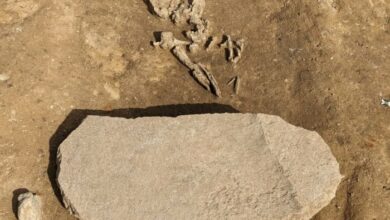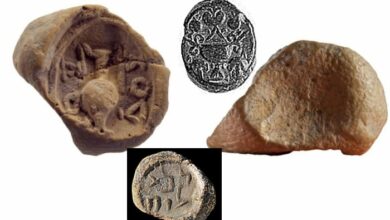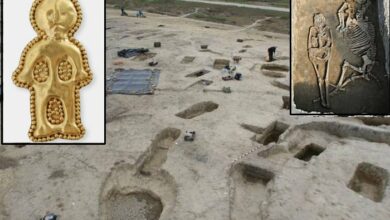Oldest Bead In America Discovered At La Prele Mammoth Site, Wyoming
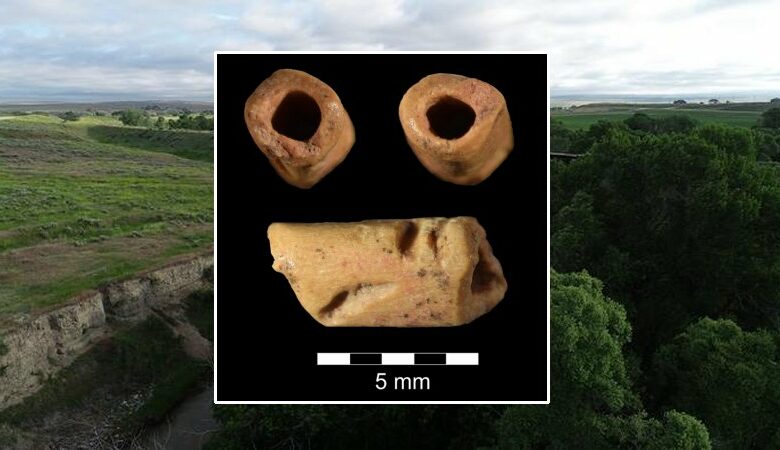
Jan Bartek – AncientPages.com – The oldest known bead in the Americas has been unearthed at the La Prele Mammoth site, located in Converse County, Wyoming. According to archaeologists, this tube-shaped bead, crafted from bone, is approximately 12,940 years old.
An aerial view of the La Prele Mammoth site in Wyoming’s Converse County. Credit: Todd Surovell
The La Prele Mammoth site was excavated for the first time in 1987. It is a Clovis site where scientists found the remains of a single Columbian mammoth (Mammuthus columbi). Recent excavations have resulted in many interesting finds that shed more light on the Clovis people.
In order to trace the source of the bone bead, the research team utilized a method known as zooarchaeology by mass spectrometry (ZooMS). This technique involves extracting collagen from the bone to understand its chemical composition, thereby providing valuable insights into its origin.
According to the University of Wyoming archaeology, Professor Todd Surovell and his team of collaborators discovered the Clovis bead was made from a metapodial or proximal phalanx of a hare (Lepus sp.).
“This find represents the first secure evidence for the use of hares during the Clovis period. While the use of hare bone for the manufacture of beads was a common practice in western North America during the Holocene, its origins can now be traced back to at least the terminal Pleistocene,” the researcher write in their study published in Nature.
“The production and use of personal ornaments, most commonly beads, are important indicators of increasing human cultural and social complexity in the Paleolithic, appearing first in the Middle Stone Age of Africa and later in the Early Upper Paleolithic of Eurasia.
Although beads are not as well documented from early archaeological contexts in the Americas, several examples have been reported from Paleoindian localities indicating that the first migrants to the Western Hemisphere made and used personal ornamentation, whether to decorate their bodies and/or clothing,” the study informs.
The bead measures approximately 7 millimeters in length, with an average internal diameter of 1.6 millimeters. The research team considered the hypothesis that the bead could have been a byproduct of carnivore ingestion and digestion, rather than human creation. However, given the scarcity of carnivores at this location and the fact that the artifact was found one meter away from a concentrated assortment of other cultural materials, this possibility was deemed less likely.
La Prele bone bead showing polished ends (upper) and side view with incisions (lower). Credit: Todd Surovell
Moreover, the external grooves on the bead align with the patterns typically made by human intervention, possibly using stones or teeth. Beads of this nature were presumably utilized for adornment purposes, enhancing either their physical appearance or their attire.
“There are many examples of the use of lagomorph bones for bead production in the Holocene archaeological records of Wyoming, Colorado, the Great Basin, and the Southwest.
We can now confidently say that this tradition extends back to the Early Paleoindian Period in the Rocky Mountain West.
See also: More Archaeology News
Importantly, tubular beads of hare bone are also known from sites in Paleolithic northeast Asia, including Denisova Cave and Yana RHS35,56. Groove and snap methods for bead production were used to manufacture Lepus bone beads in both Asia and North America35,36.
While it is tempting to suggest that this practice came across the Bering Land Bridge with the first migrants to the Americas, more material evidence would be needed to fill the large spatiotemporal gap between Asian and North American examples,” the scientists conclude in their study.
The study was published in Nature
Written by Jan Bartek – AncientPages.com Staff Writer

